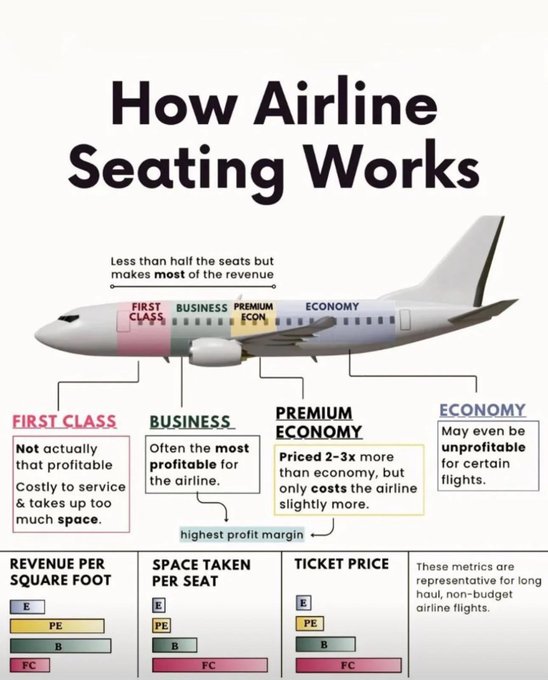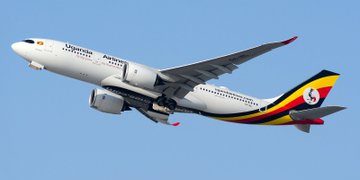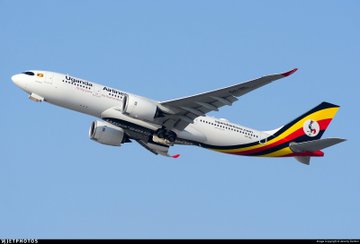London — Uganda Airlines has appointed APG as its General Sales Agent (GSA) in the United Kingdom, marking a strategic move to strengthen its presence in the UK market following the launch of direct flights between Entebbe International Airport and London Gatwick on May 18, 2025.
The partnership is aimed at accelerating market penetration, boosting ticket sales, and expanding awareness of the carrier’s new intercontinental route. As GSA, APG UK will provide comprehensive sales, marketing, ticketing, and reservation support while also engaging with the UK travel trade to promote Uganda Airlines’ brand and offerings.
“We are delighted to be representing Uganda Airlines in the UK at such a pivotal moment in their international expansion,” said Richard Burgess, President of APG Network. “The launch of direct Entebbe–London Gatwick flights is a significant milestone for travel and trade relations between our two countries. APG looks forward to ensuring the success of this route in the UK market.”
The new route is serviced by Uganda Airlines’ Airbus A330-800neo, offering three travel classes—Business, Premium Economy, and Economy—designed to meet the needs of both leisure and business travellers.
The appointment of APG comes as Uganda Airlines embarks on an ambitious plan to expand and solidify its long-haul operations, with the UK seen as a key market for both diaspora travel and trade.
How Airline Seating Works
Seating Class Configuration and Strategic Placement
Airlines carefully design the seating configuration of each aircraft to balance passenger comfort, revenue generation, and operational efficiency. The front of the aircraft is typically reserved for First and Business Class due to proximity to boarding doors, added exclusivity, and quicker deplaning. Economy, which occupies the rear and largest portion of the cabin, fills in the bulk of passengers but brings in the least revenue per square foot.

Cabin Layout Efficiency: Airlines use seat maps and advanced algorithms to test different layouts for maximum yield. The goal is to optimise load factor (the percentage of available seating capacity that is filled with paying passengers) while keeping margins high.
Cross-Subsidisation: Often, the profits from Business and Premium Economy are used to offset potential losses from Economy class, especially on long-haul routes where operational costs are high.
Ancillary Revenue: The Hidden Booster
While seat ticket prices form the core of airline earnings, ancillary revenues have become crucial for profitability, especially in Economy class. These include: checked baggage fees, seat selection fees, in-flight meals and wi-fi, loyalty programme partnerships and credit card tie-ins and upgrades. This strategy helps make even low-margin or unprofitable seats contribute more to the bottom line.
Trends and Innovations in Seating Classes
Modern airlines are constantly reimagining cabin classes to improve margins and passenger satisfaction:
Hybrid Classes: Some carriers now offer “Economy Plus” or “Comfort+” seats—slightly more legroom and perks for a modest premium.
Flexible Cabins: Certain aircraft models have modular designs that allow quick reconfiguration between classes based on seasonal demand.
Densification: Low-cost and legacy carriers alike are increasing seat counts (especially in Economy) by reducing seat pitch and installing slimline seats, boosting per-flight capacity.
Environmental and Operational Considerations
Weight vs. Profit: Premium seats, while lucrative, often add more weight per passenger (due to larger seats and extra amenities), impacting fuel efficiency.
Carbon Footprint: Because First and Business class take up more space per passenger, their carbon footprint per traveller is significantly higher than that of Economy. In essence, airline seating is a finely tuned blend of economics, psychology, and logistics.
The Entebbe–London Gatwick route not only strengthens Uganda’s connectivity with the UK but also promises to deepen trade, tourism, and cultural exchange between the two nations, setting the stage for a long-term partnership in global aviation.








